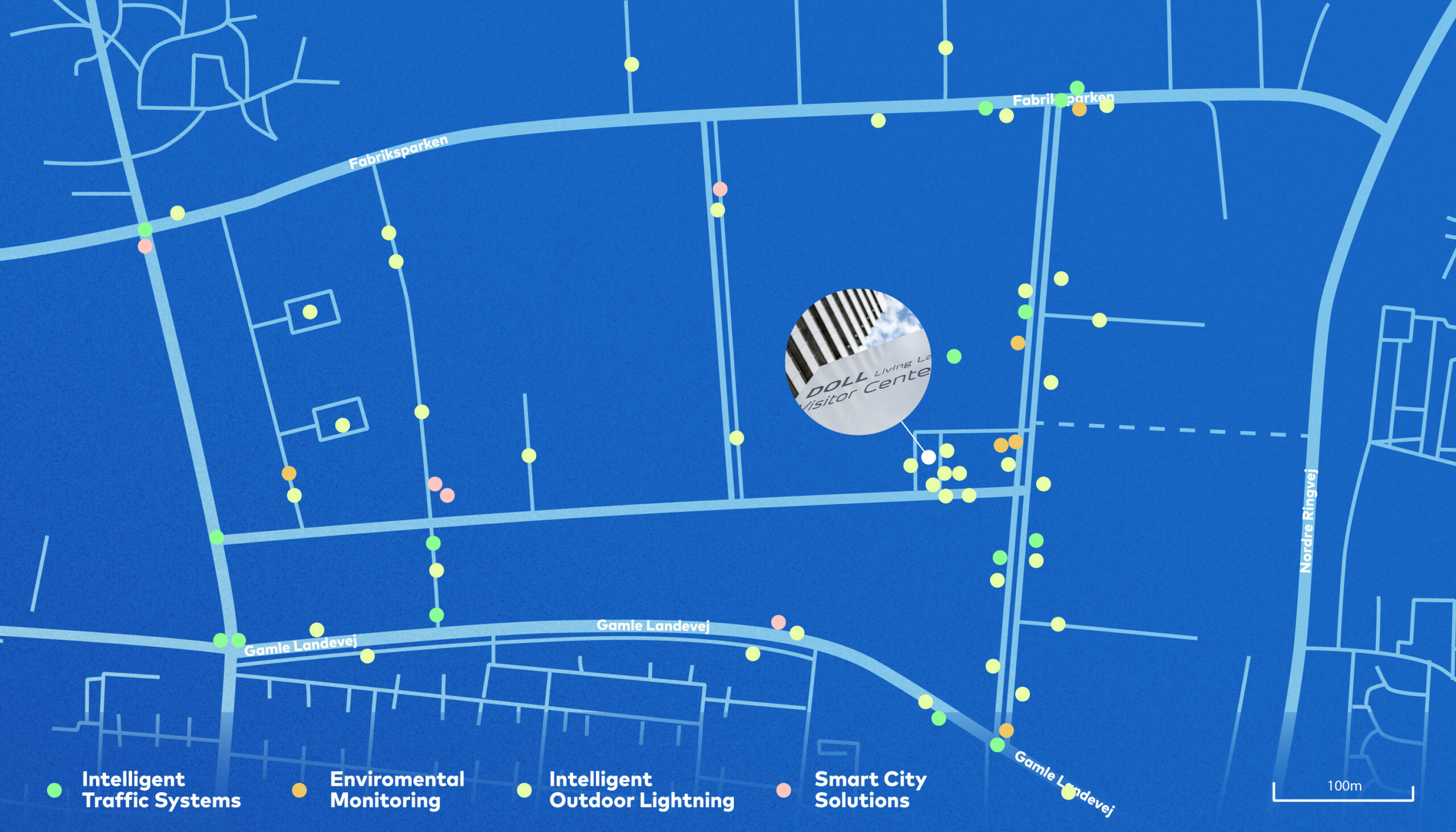Focus areas
At DOLL we fill a gap in the innovation chain by bringing public and private actors together on a neutral ground, where they can test, showcase and be inspired by cutting edge technology in a “one stop shop” with all relevant network infrastructures present across our 400 acre living lab.
As the development of “Internet of Things” continues to accelerate, with a predicted 125 billion devices connected by 2030, we aim to make full use of this potential by not only facilitating communication and knowledge sharing between public decision makers and the market, but also collaboration and system integration between individual manufactures and their technical solutions.
You can read more about our main focus areas and concrete solutions below:
CITY WIFI
LOW POWER WIDE AREA NETWORKS
CELLULAR NETWORK
SENSOR-BASED SYSTEMS
END-TO-END CASES
INTELLIGENT OUTDOOR LIGHTING SOLUTIONS
LIGHT MANAGEMENT SYSTEMS
BUILT-IN SMART TECHNOLOGIES
AND MUCH MORE
ADVANCED SENSOR BASED TRAFFIC CONTROL
ADVANCED SIGNAL PROGRAMMING
ADAPTIVE SIGNAL CONTROL
MONITORING AND VISUALISATION
AIR QUALITY
NOISE POLLUTION
TEMPERATURE
